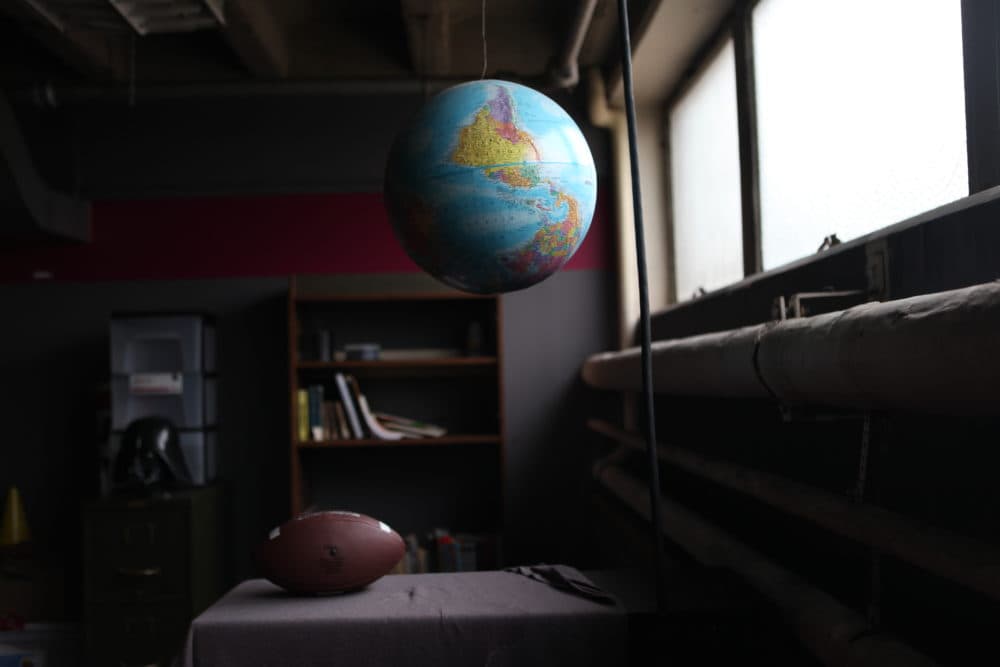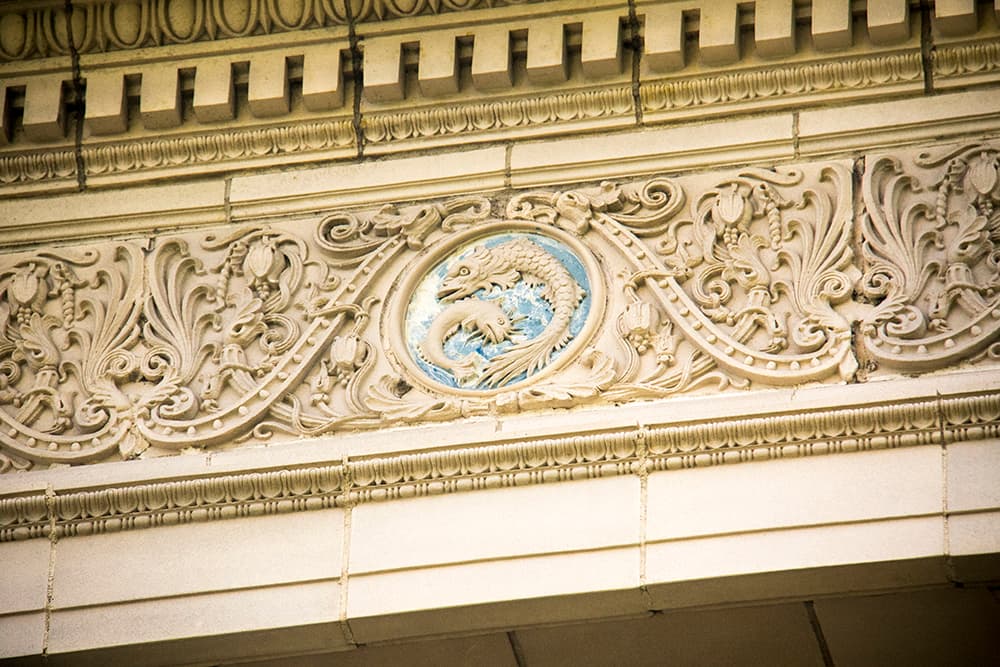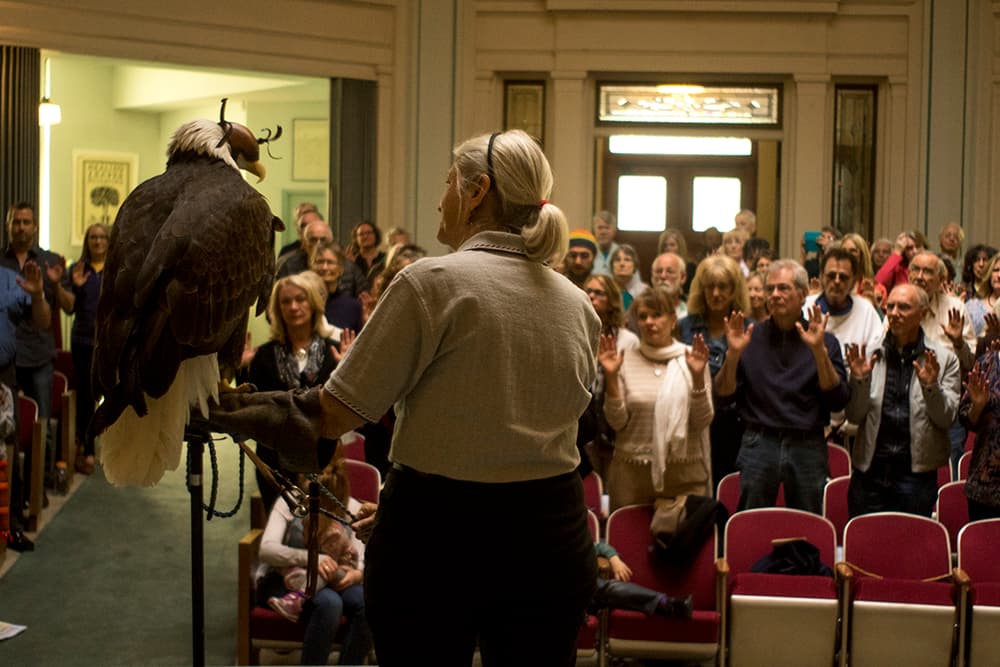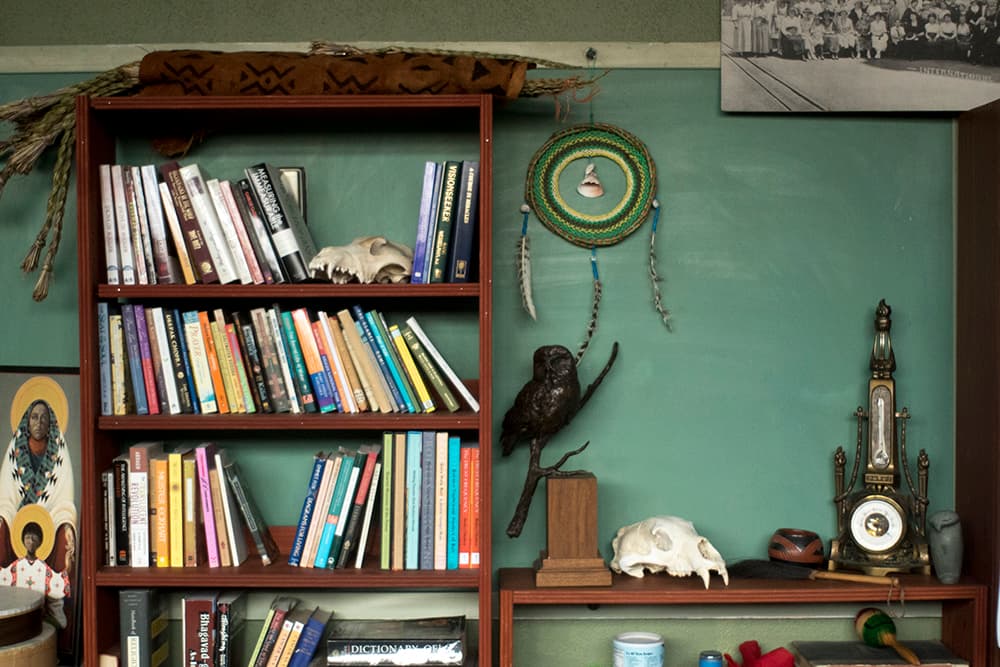
Susan Van Dyke passed by one of Denver's most unusual churches for years before she ever realized what it was.
"I never would have guessed this was a church," she said, craning her neck to examine the finely detailed astrological symbols on its wall. "I drove by it in the '80s a lot. I thought it was a Masonic temple -- somewhere you couldn't go inside."
In fact, the Althea Center at 1400 North Williams Street is one of several buildings that hosted a wave of new religious movements in Denver in the early 20th century. Previously, we've covered the neon-lit KPOF building on Sherman and the flag-burning fervor inspired by the "self-styled king of heaven and earth.”
The Althea Center is interesting for a few reasons. First, there's the architecture. The place just got a $220,000 grant that church leaders hope marks the beginning of a long restoration program. The building was designed by Jules Jacques Benois Benedict, who also did the boat pavilion at Washington Park and the Woodbury Branch Library in West Highland, among other stuff.

Then there's the history. This place was custom-built for First Church of Divine Science, a Christian sect built on the idea that God is everywhere and unchanging, and that evil exists only because we believe in it.
The Divine Science movement was founded in large part by the three Brooks sisters of Denver. Their group first met at the Plymouth Hotel, with Nona Brooks becoming the first woman pastor in Denver in 1899. The larger sect was headquartered in San Francisco, but the earthquake of 1906 recentered it in Denver.
"These three women -- I don't know how they did it-- managed to get this amazing building built in 1922," said Van Dyke, now a member and the lead fundraiser for the center's restoration efforts.

The building on Williams Street was one of the first few dedicated to Divine Science, and I find it interesting because it represents a modern attempt to give physical form to these new spiritual ideas.
"It’s somewhat of a dream of an architect, to take a new type of idea of religion and of worship," said John Olson, director of preservation programs for Historic Denver.
"He was able to reinvent the way that a congregation would experience this building. That’s a big thing about this building -- while it looks like a very elegant building, you don’t necessarily know it's a church."
He pointed in particular to the open sight-lines of the central area and its lack of the traditional cruciform layout. The place has great acoustics, too. (A 1955 addition was designed by William Muchow, another big name.)

Today, the building has been renamed to the Althea Center for Engaged Spirituality in honor of one of the sisters. It keeps its Divine Science foundation but now calls itself a "multi-cultural and eclectic spiritual community with a deep focus on global mysticism."
In other words, both Easter and Earth Day are big weekends for this community.

And they're seeing something of a resurgence at those services, according to Van Dyke. "There were 20 people keeping this space open," just a few years ago, she said. "There was one person that was well off enough to cover the expense -- about $8,000 a month."
Today, they've recovered to about 100 members, which Van Dyke credits to the group's new director, Jonathan Ellerby, whom I didn't get to meet because he just had a kid. The center has also, as always, kept a steady stream of talented musicians coming through.
With that improving membership, the center's members have moved to repair the aging building. Van Dyke headed an effort that raised $90,000 in seven weeks. With support from the State Historical Fund and Historic Denver, that will start them repairing the roof, which has leaked for a long time.
"It's in bad shape up there," she said. "Once we get the roof finished, we can look at renovating the interior, which is going to be very exciting."
The work also will restore the huge skylight to its former glory, bringing much more light onto the church's center stage, Olson said.
The center hosts frequent meditation services, conversations, yoga and more. And, from the looks of it, this quiet spot in Cheesman Park will be here for a long time to come. It already has a historic landmark status with the city, and the new work comes with an easement that requires further preservation of its facade.
"I don't know if you feel it, but when I first came in here, it kind of grabbed me," Van Dyke said. "It's so unique. You feel the peace. You feel there's a sense of something more."

























